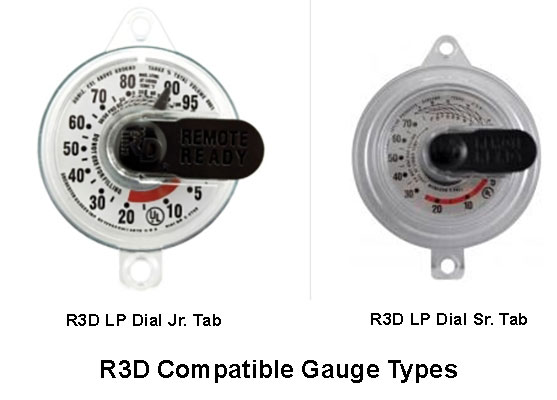Propane Tank Level Sensor Installation Guide
Sensor Overview
The Wireless Propane Tank Level Monitor allows a user to remotely track the propane levels in tanks by simply plugging the R3D® (Remote-ready) sensor into a pre-installed R3D tank gauge. As the propane level decreases, the reading produced decreases as well. The sensor converts the reading into a percentage of propane remaining in the tank and transmits that percentage wirelessly to its connected ALTA Gateway. The percentage depends on the configuration of the tank and the R3D gauge pulling an accurate propane level inside.
Important: Tank gauges that are not R3D ready can be upgraded with an R3D gauge from one of these vendors:
R3D Gauge Information
The ParamaIoT Propane Tank Level Sensor supports both Jr. and Sr. R3D Gauges. The sensor doesn’t support anything outside of this specification.
Installation Steps
Remove the sensor from the package and attach the antenna.
Step 2.
Register the sensor in ParamaIoT. Do not turn the sensor on until ParamaIoT tells you.
Step 3.
Determine the sensor’s installation location. We recommend placing the sensor in the location and making sure it reports to the gateway before final installation. See this article if you use a Button Press Sensor to perform a site survey to determine the ideal sensor installation location.
Step 4.
After ensuring the sensor is communicating with the gateway, mount the sensor to the tank using the supplied magnets in a location that will leave enough room for the 6-ft. lead to connect to the gauge.
Step 5.
Insert the lead from the sensor into the gauge. Align the black tip of the lead with the grooves of the gauge, then slide them together. A successful connection will result when you hear a click.


